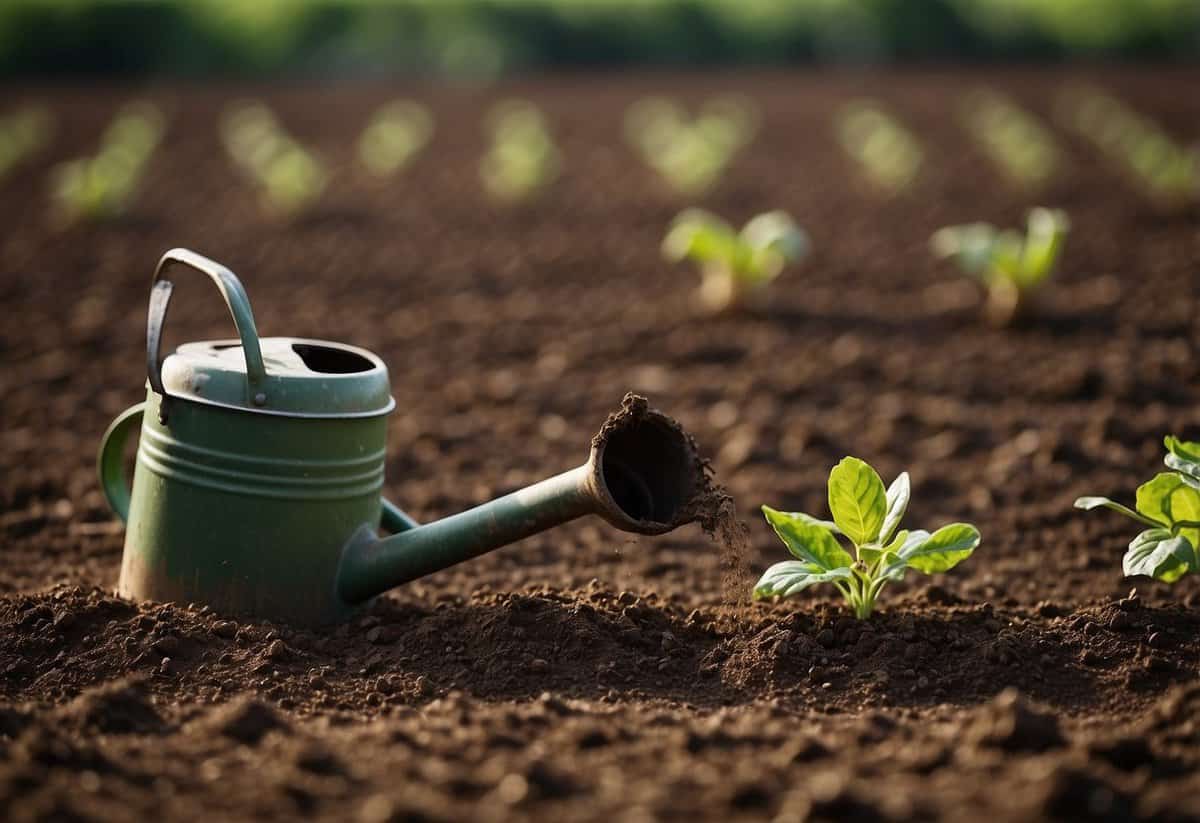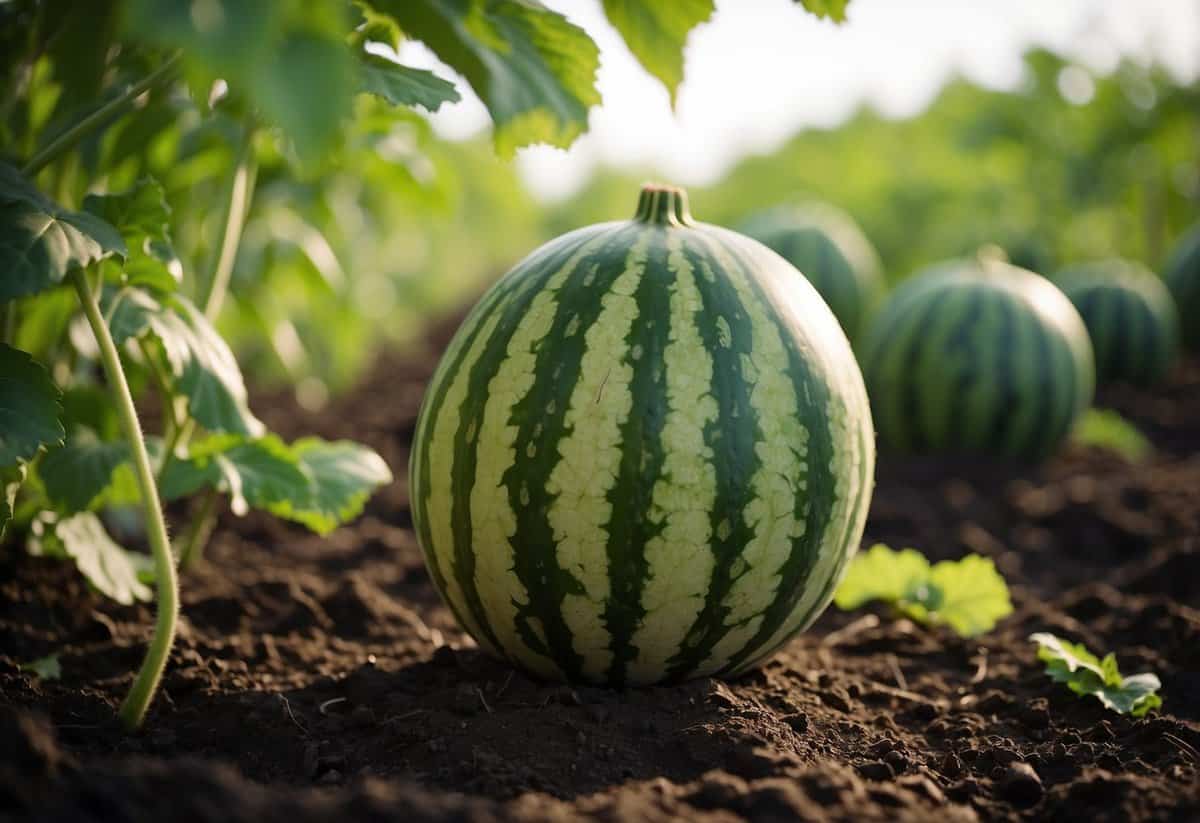Watermelon Garden Tips: Grow Juicy Melons with Ease
Growing watermelons in your garden can be both fun and rewarding. These sweet, juicy fruits are a summer favorite and can thrive with the right care and attention. By learning a few key tips, you can enjoy a successful watermelon harvest.

You’ll discover how to make your watermelons grow healthy and strong. Whether you’re a new gardener or have some experience, these tips will help you get the best results. Let’s get started on creating your perfect watermelon patch!
1) Choose the Right Watermelon Variety

Selecting the right watermelon variety is key. Different varieties suit different growing spaces and climates. For smaller gardens, consider bush or icebox varieties.
Climate plays a huge role too. Some watermelons thrive in cooler climates, while others need more heat. Look for types that match your area’s weather.
Seedless varieties are a great option for easy eating. They’re popular among many gardeners for a reason!
Remember, the right choice will help ensure a healthy and bountiful harvest.
2) Plant at the Right Time

Timing matters a lot when planting watermelons. Begin by planting your watermelon seeds 7-14 days after your area’s last expected frost date.
Make sure the soil temperature is at least 70°F. This gives the seeds the warmth they need to germinate properly.
Planting during the cooler months can slow down growth and reduce the fruit quality. Keep an eye on the weather to ensure your timing is just right!
3) Prepare the Soil

Make sure your soil is loose, well-drained, and rich in organic matter. This helps watermelon roots grow well.
Add aged compost or manure to boost nutrients. Turn the soil to about 12 inches deep.
Watermelons prefer a soil pH between 6.0 and 6.8. You can test your soil and adjust as needed.
4) Use Compost

Adding compost to your watermelon garden can do wonders. It boosts soil nutrients and improves structure.
Compost also helps retain moisture, keeping your watermelons hydrated. You can learn more from this guide.
Don’t forget, even watermelon rinds can be composted! Cut them into small pieces to speed up decomposition. Find out more here.
By using compost, you’re recycling kitchen waste and enhancing your garden’s health. Happy gardening!
5) Space Plants Properly

To grow healthy watermelons, space your plants carefully. Each watermelon plant needs around 5 feet by 5 feet of space to spread out.
If you’re using rows, keep at least 6 feet between each row. This allows the vines to grow freely without crowding.
Proper spacing improves air circulation, helps prevent diseases, and makes it easier to harvest.
6) Control Weeds

Managing weeds is essential for healthy watermelon growth. Weeds compete for water, nutrients, and light, impacting your watermelons.
One simple method involves using mulch. Place a 2-3 inch layer of mulch over a soaked newspaper or cardboard layer. This suppresses weeds effectively.
For larger gardens, consider using herbicides specially designed for watermelon crops. Always follow label instructions closely. Regular monitoring and manual weeding can also help keep your garden in top shape. Learn more about weed management here.
7) Provide Consistent Watering

Watermelons need a steady supply of water, especially during hot, dry periods. Aim to water your plants so that the moisture reaches at least 6 inches deep into the soil.
You should water the plants about 1-2 inches per week. Make sure not to overwater, as watermelons prefer well-drained soil.
Inconsistent watering can lead to split or less sweet fruits. So, keep an eye on your watermelon patch and adjust the watering as needed.
8) Mulch to Conserve Moisture

Mulching is key to keeping your watermelon plants healthy. It helps keep the soil moist and cool, which is great for the roots.
Use organic mulch, like straw or leaves, to spread around the base of your watermelon plants. This not only conserves moisture but also helps reduce weed growth.
Make sure to apply a thick layer of mulch, around 2-3 inches. This will slow down evaporation, saving you from needing to water the plants too often. Mulching also keeps the soil at a stable temperature, which benefits your watermelon plants during hot days.
9) Use Row Covers

You should use row covers to help your watermelons grow. Row covers keep the plants warmer by trapping heat, especially at night. This can speed up plant growth in cooler seasons.
Row covers also protect your watermelons from pests. They create a barrier, keeping insects away from your plants. Just make sure to remove the covers when the plants start flowering to allow for pollination.
10) Fertilize Appropriately

Use a balanced fertilizer when you first plant your watermelon seeds to give your seedlings a strong start. Aim for about 1 1/2 pounds per 100 square feet of garden space.
As your plants grow, switch to a fertilizer with more phosphorus and potassium to support fruit development. Be careful not to get fertilizer on the leaves to avoid damage.
Water the fertilizer in well so the roots can absorb the nutrients effectively. Organically, you can use compost or well-rotted manure to improve soil quality and fertility.
Check out more tips here.
Optimal Growing Conditions

To grow healthy watermelons, focus on preparing nutrient-rich soil, ensuring sufficient sunlight, and maintaining a consistent watering schedule. These factors are key to a bountiful harvest.
Soil Preparation
Start by choosing well-drained soil, rich in organic matter. Test your soil’s pH level; watermelons thrive in slightly acidic to neutral soil with a pH between 6.0 and 7.0.
Till the soil about 12 inches deep. Add compost or aged manure to boost nutrients. Avoid using fresh manure as it can harm young plants. For best results, also consider mixing in a low-nitrogen, high-phosphorus fertilizer to encourage strong root development.
Additionally, ensure your soil remains loose and well-aerated. This helps roots grow freely and improves water absorption.
Sunlight Requirements
Watermelons need plenty of sunlight to grow well. Aim for 8 to 10 hours of direct sun each day. Select a garden spot that receives full sun all day. Insufficient sunlight can lead to slow growth and fewer fruits.
If space is limited, container gardening can work too. Just make sure to place containers in a sunny location. Remember, the more sun your watermelons get, the sweeter and juicier they will become.
Also, avoid shaded areas as much as possible. Shaded spots can cause weak plants and poor fruit quality. Ensure your garden isn’t overshadowed by trees or buildings.
Watering Schedule
Watering is crucial for watermelon plants. They require about 1 to 2 inches of water per week depending on weather and soil conditions. Water deeply at the base of the plant, avoiding leaves to prevent diseases like powdery mildew.
Early morning is the best time to water. This allows excess moisture to evaporate during the day. To check soil moisture, stick your finger into the soil up to the first knuckle. If it feels dry, it’s time to water.
During fruit formation, consistent watering helps produce large, juicy melons. Be careful not to overwater as this can cause root rot. Adjust your watering schedule based on rainfall and temperature.
Planting And Care

With the right seeds, proper transplanting, and suitable fertilization, your watermelon garden can thrive. Each step is crucial for growing healthy, delicious watermelons. Let’s go through what you need to know for each phase.
Choosing The Right Seeds
Choosing quality seeds is the first step. Opt for seeds from a reliable garden center or seed supplier. Look for varieties that match your climate and growing season length. Popular varieties include ‘Sugar Baby’ and ‘Crimson Sweet’.
Check seed packages for information on the expected harvest time and size. It’s also wise to consider if you want seedless or seeded watermelons. Seedless types are more challenging to grow, requiring specific pollinator plants.
Remember, fresh seeds improve germination rates. Store seeds in a cool, dry place until planting.
Transplanting Seedlings
If you start seeds indoors, transplanting seedlings at the right time is essential. Wait until the danger of frost has passed and nighttime temperatures are consistently above 60°F.
Harden off seedlings by gradually exposing them to outdoor conditions for a week before transplanting. Choose a sunny spot with well-drained soil. Dig holes large enough to accommodate the root ball. Space plants about 3 to 5 feet apart in rows 4 to 6 feet apart.
Water thoroughly after transplanting to help seedlings settle into their new location.
Fertilizing Your Garden
Watermelons are heavy feeders, so proper fertilization is key. Start by enriching the soil with aged compost or manure before planting. Use a balanced granular fertilizer like 10-10-10 (Nitrogen-Phosphorus-Potassium) during early growth stages.
As vines grow, switch to a fertilizer higher in phosphorus and potassium to support fruit development. Avoid putting fertilizer directly on the plants; spread it around the base and water it in well.
Monitor your plants for any nutrient deficiencies and adjust your fertilization routine accordingly. These steps will help ensure your watermelon plants receive the nutrients they need throughout the growing season.
Common Issues and Solutions

Growing watermelons can come with several challenges. These issues often include pests and diseases which can harm your plants. Knowing how to deal with these problems can help you maintain a healthy watermelon garden.
Pest Control
Pests can be a big problem for watermelon plants. Aphids, cucumber beetles, and squash bugs are common pests that can damage your crops. Aphids suck the sap from the plants, causing leaves to curl and stunt growth. To manage aphids, you can spray the plants with a solution of water and dish soap or introduce beneficial insects like ladybugs.
Cucumber beetles chew on the leaves and stems. They can also spread bacterial wilt. Handpicking these beetles early in the morning when they are less active can help. You can also use row covers to keep them away from young plants.
Squash bugs suck the sap from the leaves and can cause them to wilt. Removing plant debris from the garden and using neem oil can reduce squash bug infestations. Regularly inspect your plants and act quickly when you see pests.
Preventing Diseases
Diseases like powdery mildew and fusarium wilt can cause serious damage to watermelon plants. Powdery mildew appears as a white, powdery substance on the leaves. This disease can be managed by ensuring good air circulation around the plants and applying fungicides if necessary.
Fusarium wilt causes the leaves to turn yellow and the plant to die. It thrives in warm, moist soil. To prevent it, rotate your crops and plant watermelons in well-drained soil. Also, using disease-resistant varieties can help.
Phytophthora blight can affect all parts of the plant. It is best controlled by avoiding overly wet conditions. Reduce watering when the symptoms appear and ensure proper drainage. Keeping the garden clean and removing infected plants can also help to prevent the spread of diseases.







